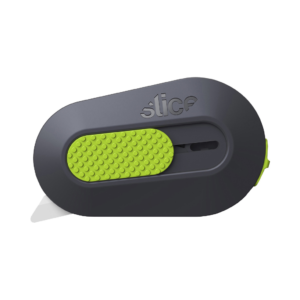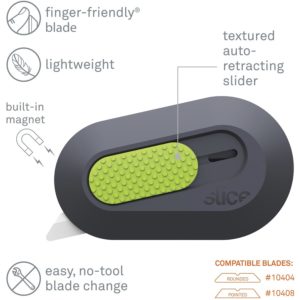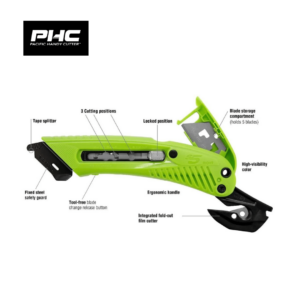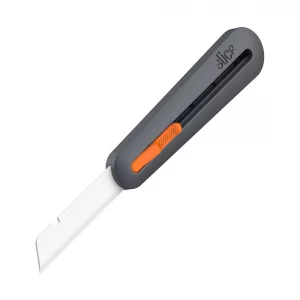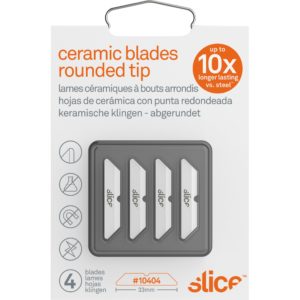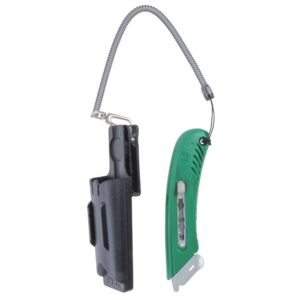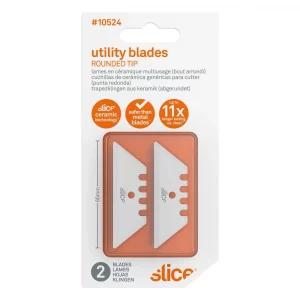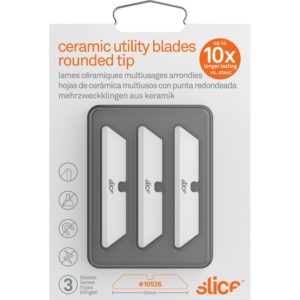Ceramic blades have long been lauded for their sharpness, durability, and longevity.
Often used in applications such as kitchen knives and industrial cutting tools, their usage is quite diverse.
Companies like Slice© revolutionized safety in the workplace by offering ceramic safety cutters, but there are some downsides.
In this article, we explore whether these blades can effectively cut plastic.
- Rated 5.00 out of 5$8.99This product has multiple variants. The options may be chosen on the product page
The Composition of Ceramic Blades
Ceramic blades are made from a type of ceramic known as zirconium dioxide, or zirconia. This material is incredibly hard – it ranks 8.5 on the Mohs scale of mineral hardness, only slightly less than diamond. The blades are made by pressing zirconia powder under high pressure and heating it in a sintering process. This gives the blades their hardness and sharpness.
General Uses of Ceramic Blades
Due to their hardness and ability to retain sharpness, ceramic blades find use in various applications. These range from kitchen utensils like knives and peelers to industrial tools and medical instruments. They’re appreciated for their ability to make clean, precise cuts and their resistance to rust and corrosion.
Ceramic Blades and Plastic: A Perfect Match?
Given the properties of ceramic blades, it’s natural to wonder if they can cut plastic effectively. The answer is yes. Ceramic blades can indeed cut plastic.
Their sharpness allows them to make precise, clean cuts, making them suitable for cutting plastic wrap, trimming plastic sheets, or even more heavy-duty plastic-cutting tasks.
However, the hardness and brittleness of ceramic blades also mean they can chip or break if used improperly or on too hard a material.
Advantages and Disadvantages of Using Ceramic Blades on Plastic
Using ceramic blades to cut plastic comes with both advantages and disadvantages. On the plus side, the sharpness of ceramic blades allows for precise cuts, and their resistance to rust and corrosion makes them durable. On the downside, ceramic blades can chip or break if used on very hard plastics or twisted or flexed during cutting.
Safety Precautions When Using Ceramic Blades
Due to their hardness and brittleness, safety is paramount when using ceramic blades. It’s essential never to use them on hard materials, to avoid twisting or flexing them during use, and to handle them carefully to prevent accidental cuts. Always store ceramic blades in a secure place and handle them with care.
Conclusion
In conclusion, ceramic blades can cut plastic, making them versatile in many applications. Their hardness, sharpness, and durability allow for clean, precise cuts on plastic.
However, using and handling these blades correctly is essential to avoid damaging them or causing accidents.
Always consider the type of plastic you’re working with and use the right cutting tool.
Explore the many benefits of purchasing utility knives in bulk—from significant cost savings and enhanced workflow
Explore the many benefits of purchasing utility knives in bulk—from significant cost savings and enhanced workflow
Introducing Slice Ambidextrous Ceramic Scissors As a professional in any industry, having the right tools can

